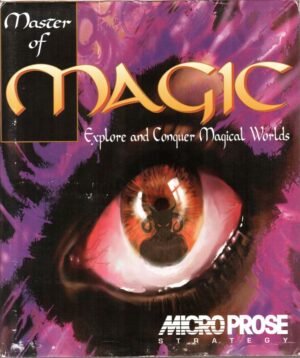Retro Replay Review
Gameplay
Epic delivers a blend of fast-paced space combat and hands-on planetary operations that keeps players on their toes from start to finish. Piloting sleek starships against swarms of hostile Rexxon fighters, the zero-g dogfights feel responsive and engaging. Controls are intuitive, allowing both veteran space-shooter fans and newcomers to dive right into the action without a steep learning curve.
(HEY YOU!! We hope you enjoy! We try not to run ads. So basically, this is a very expensive hobby running this site. Please consider joining us for updates, forums, and more. Network w/ us to make some cash or friends while retro gaming, and you can win some free retro games for posting. Okay, carry on 👍)
What sets Epic apart from other shooters of its era is the seamless integration of surface missions. After dogfighting through asteroid fields and alien armadas, you’ll land on exotic planets to undertake ground-based objectives such as sabotage, rescue, and stealth reconnaissance. The shift in pacing adds welcome variety, breaking up relentless space firefights with slower, tactical challenges that reward careful planning.
Despite its strong core mechanics, Epic’s brevity is apparent. With just nine levels in total, a dedicated player can complete the entire campaign in a few sittings. However, the game’s tight level design and escalating difficulty ensure each mission feels purposeful. Optional side challenges and score-based objectives provide replay incentive, though players seeking marathon-length campaigns may find the content lightweight.
Graphics
Upon its release, Epic set a new visual benchmark for space shooters. The starfields, nebulae, and planetary surfaces are richly detailed and colorful, breathing life into every mission. Ships gleam with polished hull textures, and explosion effects pack a satisfying punch, making each dogfight visually spectacular.
Surface missions showcase diverse environments—from barren desert worlds to lush alien jungles—each rendered with impressive draw distances and dynamic lighting. Even today, many of the environmental backdrops hold up well, demonstrating the developers’ dedication to world-building at a time when hardware constraints were far stricter.
That said, the game’s heavy emphasis on cutting-edge graphics did come at a cost. The large asset files and demanding rendering engines of the era meant that the overall package was shorter than competitors. Modern players on today’s hardware may also notice dated texture resolutions and simpler polygon counts, but these limitations are often overshadowed by the game’s artistic design and cinematic flair.
Story
Epic’s narrative thrust is simple yet compelling: the sun is on the brink of a supernova, and humanity’s only hope lies in a massive fleet of ark ships. This evacuation mission serves as a powerful backdrop, injecting urgency into every skirmish and surface raid. The stakes are clear—survive long enough to find a new home for humankind.
Complicating humanity’s flight are the Rexxons, a ruthless alien race whose territory stands between the fleet and salvation. Through in-game transmissions and mission briefings, you’re drawn into the escalating conflict as both sides vie for control of vital star lanes. While dialogue can feel exposition-heavy at times, it effectively grounds your actions in a larger interstellar war.
Epic’s storytelling is further elevated by a series of cinematic cutscenes scored to selections from Gustav Holst’s “The Planets.” These classical motifs add grandeur to key narrative moments, transforming routine mission transitions into stirring cinematic interludes. The combination of concise plot beats and orchestral accompaniment gives the game a surprisingly epic scope for its nine-level length.
Overall Experience
For anyone seeking a tightly focused space shooter with stunning visuals and a memorable soundtrack, Epic remains a worthwhile journey. Its short length may deter completionists, but each level is packed with high-octane action and atmospheric set pieces that leave a lasting impression. The interplay between ship-based combat and on-foot planetary missions adds enough variety to prevent monotony.
The audio-visual presentation—especially the use of Holst’s “Planet Suite”—lends the game a cinematic quality that few of its contemporaries matched. Even if some technical aspects show their age, the artistic vision and pacing ensure that the experience never feels outdated. Players who value narrative cohesion and polished set pieces will appreciate how each mission builds toward a final, climactic showdown.
In summary, Epic may not offer weeks of gameplay, but what it does provide is refined, exhilarating, and cohesive. If you can accept its brief campaign in exchange for top-tier production values and varied mission design, you’ll find a memorable voyage through the stars—one that stands as a testament to the golden era of space shooters.
 Retro Replay Retro Replay gaming reviews, news, emulation, geek stuff and more!
Retro Replay Retro Replay gaming reviews, news, emulation, geek stuff and more!









Reviews
There are no reviews yet.